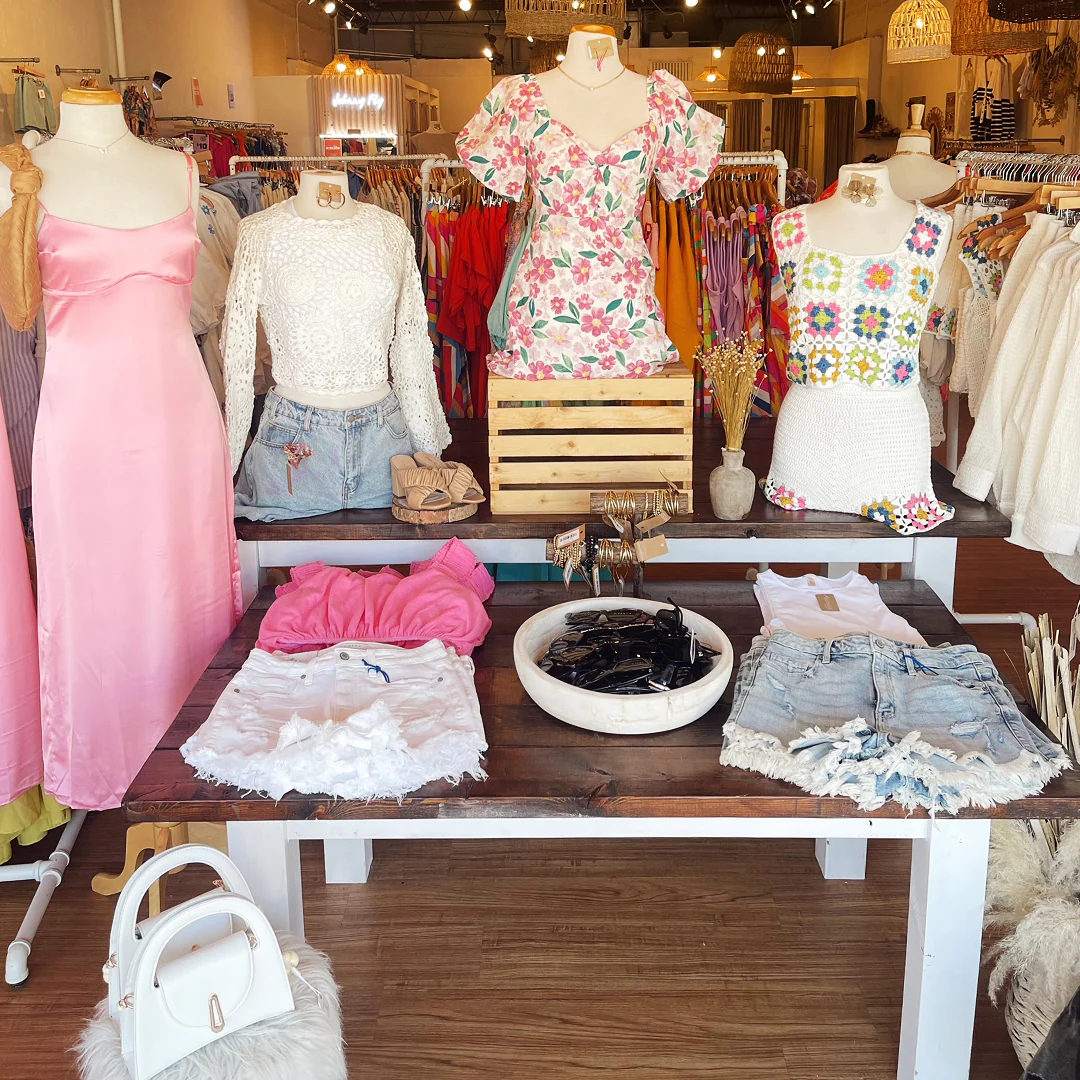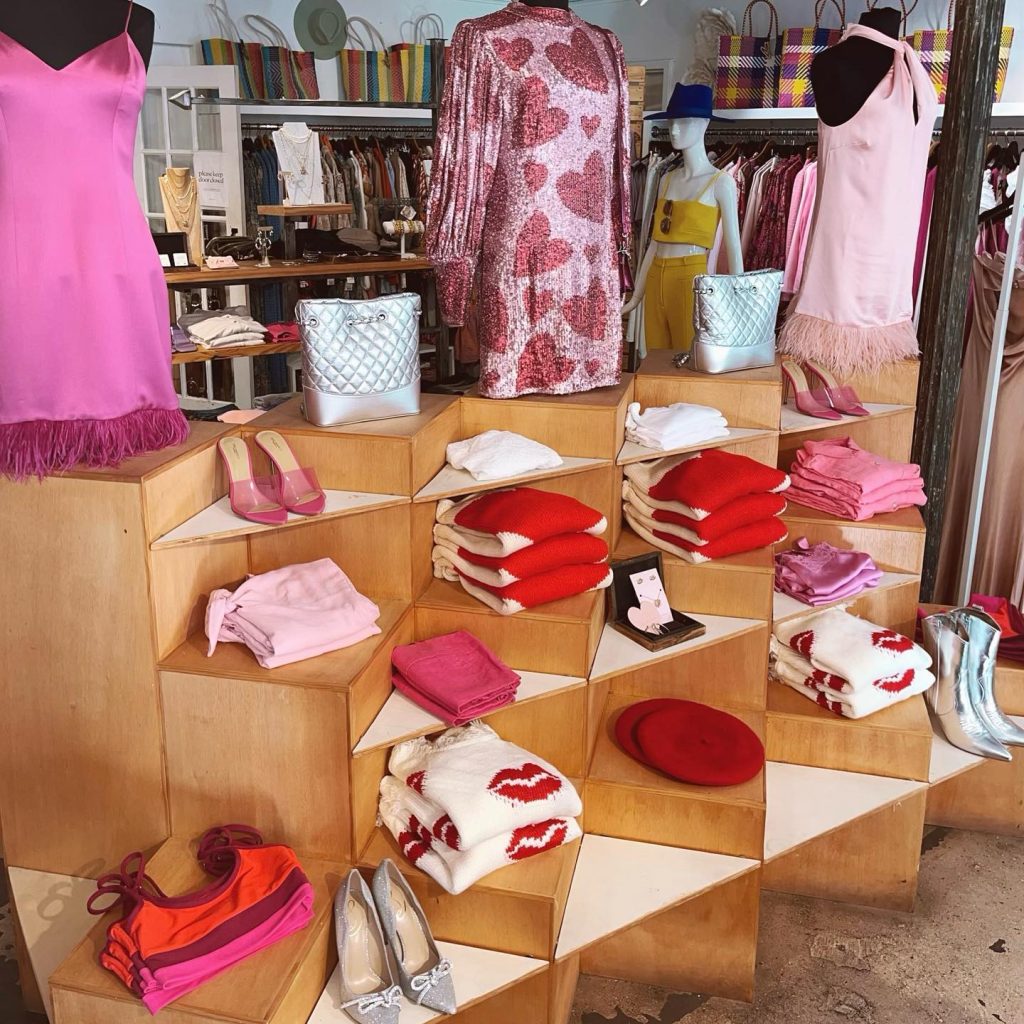The Impact of Social Media on Today's Boutique Fashion Trends
Wiki Article
Exploring the Evolution and Influence of Clothing on Modern Fashion Trends
The development of clothes has actually dramatically affected contemporary fashion trends, merging historic criteria with innovative developments. Famous figures like Coco Chanel and Yves Saint Laurent transformed the fashion sector by presenting ideas that prioritize convenience and availability, which continue to resonate today.Historic Style Influencers
In the tapestry of fashion background, specific figures have left an enduring mark, shaping the fads and styles that define whole eras. Coco Chanel, a cutting edge designer, redefined females's fashion by presenting comfy, stylish apparel that departed from restrictive corsets.Elsa Schiaparelli is another critical number, renowned for her avant-garde styles that included surrealist art, collaborating with Salvador Dalí to produce wayward items that tested conventional visual appeals. Her cutting-edge use color and vibrant patterns resounds in contemporary fashion. Yves Saint Laurent, meanwhile, equalized high style with prêt-à-porter collections, bringing runway styles to the masses and setting a criterion for modern-day ready-to-wear lines.
These visionaries, to name a few, not just revolutionized fashion in their times yet additionally set enduring patterns that resonate in today's fashion business, providing a foundation upon which contemporary developers remain to introduce and build. Their legacies underscore the value of creative thinking and daring in vogue's ever-evolving story.
Technological Advancements in vogue
Amidst the dynamic landscape of the garment industry, technical innovations stand at the center of advancement, reshaping just how designers create and customers involve with style. The integration of 3D printing has transformed style procedures, making it possible for designers to explore intricate structures and lasting products that were formerly inconceivable. This technology helps with rapid prototyping, reducing waste and expediting manufacturing times.
Smart textiles, installing technology into textiles, are also transforming the sector. Developments like temperature-regulating and self-cleaning fabrics use boosted functionality and convenience. Wearable modern technology, incorporating functions like health and fitness tracking and communication, includes a brand-new measurement to style, combining looks with practicality.
Cultural Changes and Design
As technical innovations proceed to improve the fashion business, social changes are just as significant, redefining design and customer choices. In the last few years, the surge of social media sites systems has actually increased the circulation of worldwide style patterns, enabling diverse cultural impacts to exist side-by-side and merge. This electronic interconnectivity has helped with the fast exchange of ideas, leading to a more diverse and comprehensive interpretation of design that shows the diverse nature of modern society.Social recognition and recognition have prompted developers to attract motivation from a broader range of ethnic and historic contexts, integrating traditional concepts with contemporary visual appeals. This fusion has actually led to fashion that reverberates with a larger audience, advertising a feeling of identification and belonging across various demographics. Furthermore, the increasing need for customization has driven brand names to provide customizable options, enabling customers to express originality while reflecting their social heritage.
Moreover, shifting social worths have actually affected style, with inclusivity and her response diversity becoming main themes. The industry has begun to embrace models and influencers of various physique, ethnic backgrounds, and sex identifications, challenging traditional appeal requirements. This improvement emphasizes the power of cultural changes fit the future of fashion, as design ends up being an extra authentic expression of individual and collective identity.
Sustainability and Modern Style
While the style market proceeds to evolve, the crucial for sustainability has actually ended up being progressively immediate, influencing contemporary style practices. The rise of slow style, which stresses top quality over amount, urges customers to invest in timeless pieces instead than short-term patterns.Moreover, modern-day style is defined by its development in minimizing waste and advertising circularity. Strategies such as zero-waste pattern cutting and 3D knitting are getting traction, allowing developers to develop garments with very little fabric wastage. In addition, brand names are embracing transparent supply chains, making certain liability and promoting consumer trust fund. This technique not only mitigates ecological effect but additionally improves the social responsibility of style houses.

Future Trends in vogue

Sustainability will continue to be a driving force in forming future style trends. The industry is increasingly taking on environment-friendly products and ethical manufacturing techniques, replying to a growing consumer demand for responsible practices. Advancements such as bio-fabricated products and closed-loop recycling systems are readied to redefine how clothing is created and consumed, lowering ecological influence while preserving design and quality.
Social changes, including the increase of inclusivity and variety, look at this web-site will likewise play a pivotal function. As culture becomes a lot more aware of social problems, style is expected to end up being a system for expression and adjustment. Designers will likely concentrate on developing collections that mirror a broader series of experiences and identities, championing representation and access.
Conclusion
The development of garments significantly impacts contemporary style fads, where historic impacts merge with contemporary designs. Secret numbers article like Coco Chanel and Yves Saint Laurent have actually redefined design, while technical innovations such as 3D printing and smart fabrics expand creative possibilities. Cultural shifts towards inclusivity and sustainability oblige brands to embrace honest methods and accept variety. This recurring advancement emphasizes style's function as a mirror to social values and technological innovation, recommending a future abundant with innovation and inclusivity.The development of clothing has actually dramatically influenced modern-day style patterns, combining historical criteria with sophisticated developments.Amidst the vibrant landscape of the fashion industry, technical advancements stand at the center of advancement, improving exactly how designers develop and consumers involve with style.While the style industry continues to progress, the crucial for sustainability has become progressively urgent, affecting modern layout methods. As sustainability becomes embedded in contemporary style, it leads the way for a more conscious and accountable style industry.
The development of clothing considerably influences modern-day style trends, where historic influences combine with contemporary styles.
Report this wiki page